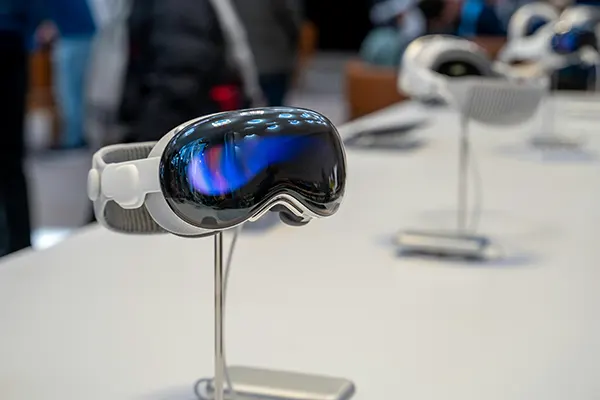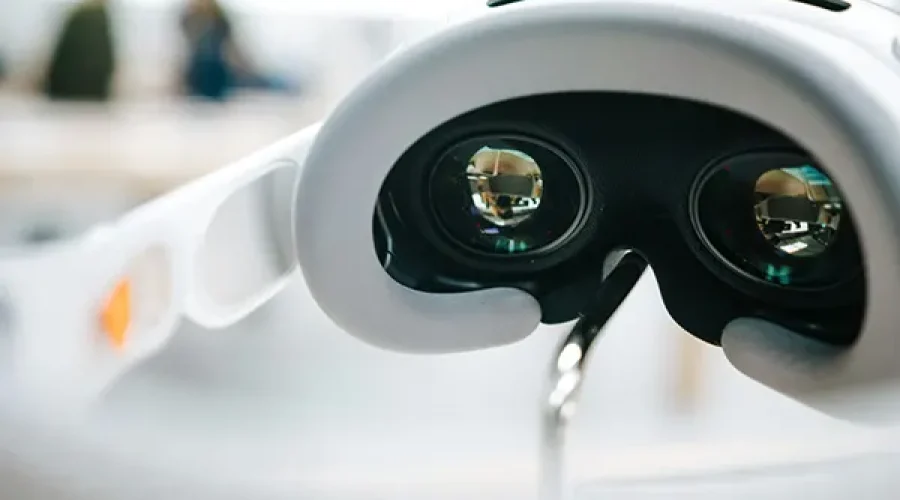Meta Quest 3 vs. Apple Vision Pro: Clash of the Mixed Reality Titans
The world of mixed reality (MR) is heating up with the recent releases of Meta Quest 3 and Apple Vision Pro. Both headsets are pushing the boundaries of the possible, offering impressive new ways to blend the digital and physical worlds. But what sets them apart? And more importantly, which headset offers the better experience and greater value proposition? Let’s dive in!
The Specs Showdown
Before we dig into the experiential differences, a quick specs comparison is in order:
| Specification | Meta Quest 3 | Apple Vision Pro |
|---|---|---|
| Display | Dual LCD panels per eye | Dual micro-OLED panels per eye |
| Resolution | 2160 x 2160 per eye | 4128 x 2160 per eye |
| Refresh Rate | Up to 120Hz | Up to 120Hz |
| Field of View | 105 degrees | 120 degrees |
| Eye-tracking | Yes | Yes |
| Face Tracking | Yes | Yes |
| Passthrough | Color | Color |
| Controllers | Touch Controllers | Apple MR Controllers (sold separately) |
| Processor | Qualcomm Snapdragon XR2+ Gen 2 | Apple M2 |
| Price | $499 | $3,499 |
drive_spreadsheetExport to Sheets
The Core Differences: Immersiveness vs. Refinement
The single biggest takeaway is this: The Meta Quest 3 favors broad accessibility and affordability, while the Apple Vision Pro focuses on a superior technical experience for a niche, willing to pay a premium.
- Visuals: Apple Vision Pro wins this round. The higher resolution, wider field of view, and the choice of micro-OLED displays create undeniably sharper, more immersive visuals. The Quest 3, while no slouch, can’t compete on pure image quality.
- Passthrough: The technologies are similar in both, but Apple Vision Pro edges out in front due to potentially higher-resolution cameras and processing power. This could mean objects and people in your real environment integrate more seamlessly with virtual content.
- Processing Power: The Apple Vision Pro is powered by the powerful M2 chip, while the Quest 3 uses a mobile-focused processor. Apple’s headset has the potential for smoother rendering, more complex graphics, and advanced AI capabilities.
Beyond the Specs: The Experience
While specs matter, it’s the real-world experience that ultimately decides a headset’s value.
- Comfort and Convenience: The Quest 3, with its standalone nature, familiar design, and lighter weight is likely more comfortable for extended use. The Vision Pro’s reliance on a tethered MacBook for full power, its heavier weight, and more complex fit adjustments might impact extended sessions.
- Content Ecosystem: Quest 3 offers a massive library of VR games and experiences. Apple Vision Pro’s content selection is currently limited. However, Apple’s ecosystem means it could quickly evolve, especially if developers embrace the potential for productivity and AR experiences.
- Collaboration: Quest 3 shines here with Horizons Workrooms and easy multiplayer gaming. Vision Pro focuses on individual experiences and augmented productivity workflows tied to your Apple devices.

Who Are These Headsets For?
- Quest 3: The Enthusiast’s Choice If you’re a gamer, want the freedom of standalone VR, crave a social and active virtual experience, or are budget-conscious, then the Quest 3 delivers exceptional value.
- Vision Pro: The Professional Power Tool If you prioritize visual fidelity for creative work, need seamless integration within the Apple ecosystem, or are specifically focused on AR development/use cases, the Vision Pro could be worth the investment. It’s also geared for early adopters who aren’t price-sensitive.
The Verdict
Both the Meta Quest 3 and Apple Vision Pro represent significant leaps forward in mixed reality technology. The “better” headset depends entirely on your individual needs and priorities:
- For pure VR gaming and fun, the Quest 3 reigns supreme.
- For visually demanding work, AR experimentation, and the “wow” factor, the Vision Pro is king…if you can stomach the price.
The future of MR is bright, and the competition between these tech giants will only drive further innovation. It’s an exciting time to step into a world where the lines between the digital and the real are truly starting to blur. Recently I noticed a great review from Himels Tech, which I think point to the same conclusion Apple Vision Pro gives a better immersive experience. KInd of what we expect from Apple products and this price tag, right? Please check their video below:






